What do you think of when you think of your dog’s eyes? In one word, dog’s eyes can be described as SOULFUL. Those beautiful orbs show every emotion that your dog is feeling. However, despite those amazing and long gazes, there is something that is a bit of a mystery in those eyes too. The third eyelid in dogs. Even though it may seem inconspicuous, it has a very specific role to play in the well-being and health of your little pup.
In this blog post, I will focus on the third eyelid in dogs. It is much more than what you see on the surface. I will discuss everything about the third eyelid, starting with its functions, diseases of the third eyelid and finally, how to prevent third eyelid issues. Let’s dive into the world of third eyelids and appreciate the beauty of this tiny inconspicuous organ.
If you wish to be the best guardian to your dog, subscribe to The Happy Puppers. The subscription option is present on the sidebar. Your subscription will allow me to keep you appraised about the new blog post releases so you never miss out on any amazing tips. If you like watching videos, subscribe to the YouTube channel of The Happy Puppers, Shruti, and Delta. Remember to ring the notification bell and set it to ALL so that YouTube notifies you the moment the next dog care video releases.
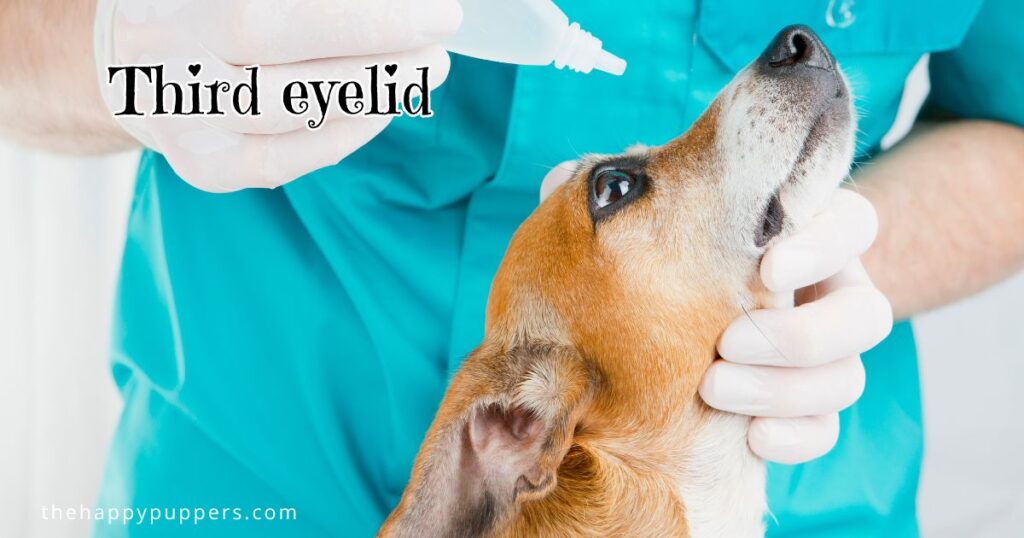
Topics covered in this blog post
What is the third eyelid in dogs?
The eye of dogs is a marvel in itself. It perceives the world around it in grand detail. Among the components of the dog eye is the third eyelid. Also referred to as a haw or nictitating membrane, it is one that adds the final layer of complexity to the eyes of your dog. Even though, the third eyelid in dogs is hidden from plain sight, it is responsible for a variety of functions responsible for keeping the eye healthy.
Understanding the anatomy of the third eyelid in dogs.
Unlike the upper and lower eyelid, the third eyelid does not close and open. It is a tissue that is semi-transparent and present on the inner corner of the eye of your dog. The third eyelid in dogs is made of connective tissue and cartilage. Despite being delicate, this structure is pretty well anchored to the eye’s orbit via muscles. This allows the third eyelid to easily move across the surface of the eye.
Role of the third eyelid
Eye protection
The primary purpose of the third eyelid in dogs is to protect the eye of your dog from any harm. If your dog’s eye encounters foreign objects, debris, or even intense wind, the third eyelid sweeps over the eyelid and shields it against any form of damage. Furthermore, it is also responsible for protecting the sensitive conjunctiva and cornea.
Tear film maintenance
Tears are responsible for much more than just expressing sadness. Tears keep the eye moist and prevent dryness in the eye. The third eyelid in dogs contains lacrimal glands which is responsible for tear production. At times, if any foreign object enters the eye, the lacrimal glands produce tears which help flush out the object. Thus, tears have a huge role in maintaining eye health in dogs.
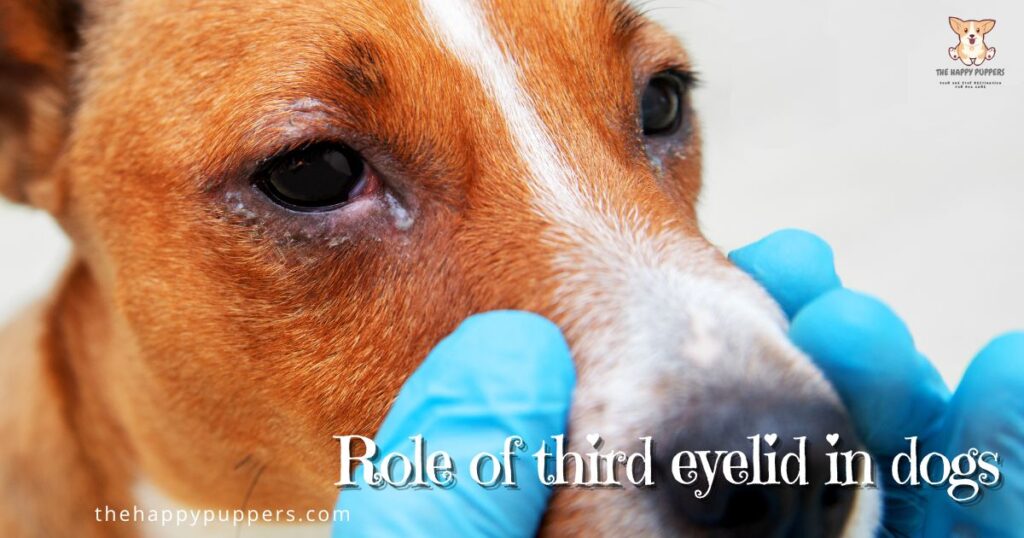
Supporting the immune system
The third eyelid in dogs supports a healthy immune system in your canine friend. This organ contains lymphoid tissue. The lymphoid tissue and the lymphatic system are responsible for the identification and protection against irritants or pathogens that may enter the eye. In response to the stimulation of the immune system, the lymphoid tissue releases antibodies protecting the eye from harm.
Common diseases involving the third eyelid in dogs
Even though the third eyelid in dogs has a crucial role in protecting the dog from infections and injuries, it can be quite vulnerable at times. The problems concerning the third eyelid can range from benign issues to serious complications. Therefore, as responsible dog guardians, it is your duty to be aware of all the conditions that may get inflicted on the third eyelid of dogs.
Cherry Eyes (Third eyelid gland prolapse)
Cherry eye is one of the most common conditions affecting the third eyelid of dogs. This condition occurs when the third eyelid gland gets displaced and starts to protrude out from the inner corner section of the eye. The eyes give off an appearance of being covered by a red swollen mass. It is not only unsightly in the way it looks, but it also puts your dog in extreme discomfort and may lead to further potential complications if it is not treated on time.
Risk factors predisposing the pup to cherry eye
- Genetic risk
- Connective tissue weakness in the eye
- Injury and trauma to the eye.
Clinical signs
- Excessive and repeated tearing.
- Presence of a reddish mass at the inner corner of the eye.
- Constant rubbing of the eye due to irritation.
Treatment Options
- Surgical intervention to reposition the gland.
- Suturing to suture the gland into place.
Tumor in the third eyelid gland
Another unsavory problem of the third eyelid in dogs is the formation of tumors. The tumors can range from benign to malignant masses. As a guardian, you must pay extra attention to your dog’s eyes. If detected early, the chances of positive outcomes are higher.
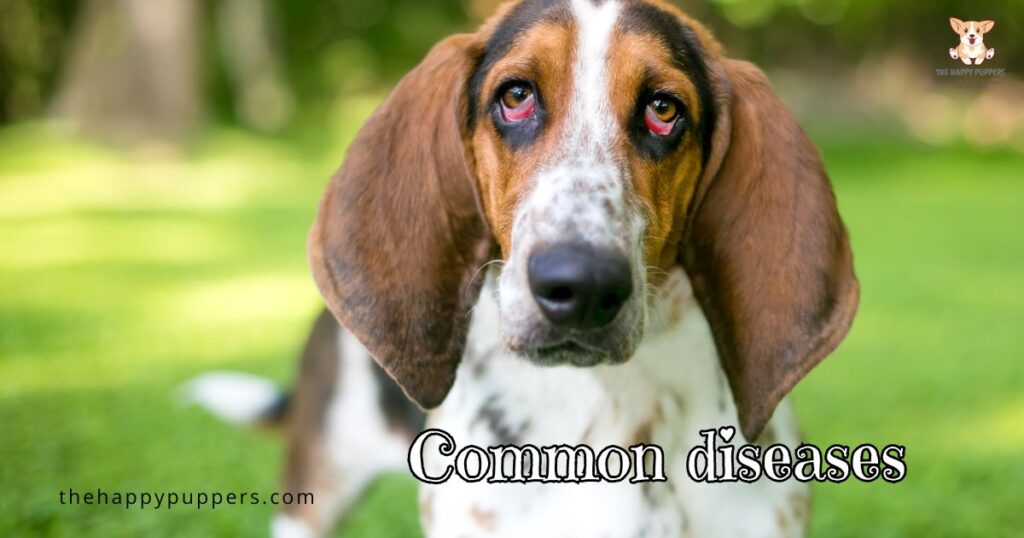
Symptoms of third eyelid tumors
- Presence of a visible mass in the third eyelid.
- Changes in size and appearance of the third eyelid in dogs
- Excessive discharge or tearing up.
- Pawing at the eye or squinting.
Treatment methods for third eyelid tumors
- Surgically removing the tumor.
- Follow-up biopsy to identify if the growth was malignant.
Spasms of the third eyelid in dogs
Twitching of the third eyelid can occur on an intermittent basis. Most often these are benign issues. However, if these symptoms occur repeatedly, they can be a sign of a bigger underlying issue. Thus, do not ignore any symptoms that may seem to be out of character for your dog.
When should you take your dog to the vet?
- The spasms occur repeatedly.
- The spasms persist for extended periods of time.
- There are other concerning symptoms along with the spasm/twitch.
Infection and inflammation
Like every other organ of your dog, the third eyelid in dogs is also prone to infections and inflammations, caused by microbes like viruses, bacteria or foreign objects.
Symptoms of infection and inflammation
- Swelling and redness of the third eyelid.
- Mucus accumulation and discharge.
- Discomfort and repeated squinting.
How to keep the third eyelid in dogs healthy?
Being a guardian is hard. Being a guardian to a species that cannot vocalize their problem and discomfort is worse. Thus, as a dog guardian, you need to focus on more than just making sure that the eyes of your dog are bright and white. Since the well-being of the third eyelid is crucial for the overall well-being of your dog, here are some ways you can ensure that your dog’s third eyelid is well cared for.
Eye check-ups on a regular basis
If there is any issue with the third eyelid of your dog, it can be diagnosed and treated early if you opt for regular eye examinations. Your dog should undergo a comprehensive health check-up every 6 months. This only ensures that the third eyelid is protected, it also ensures that the vet can have a proper look at all the other organs of your dog as well. If any other problem is brewing, your vet will be able to diagnose and treat it quickly.
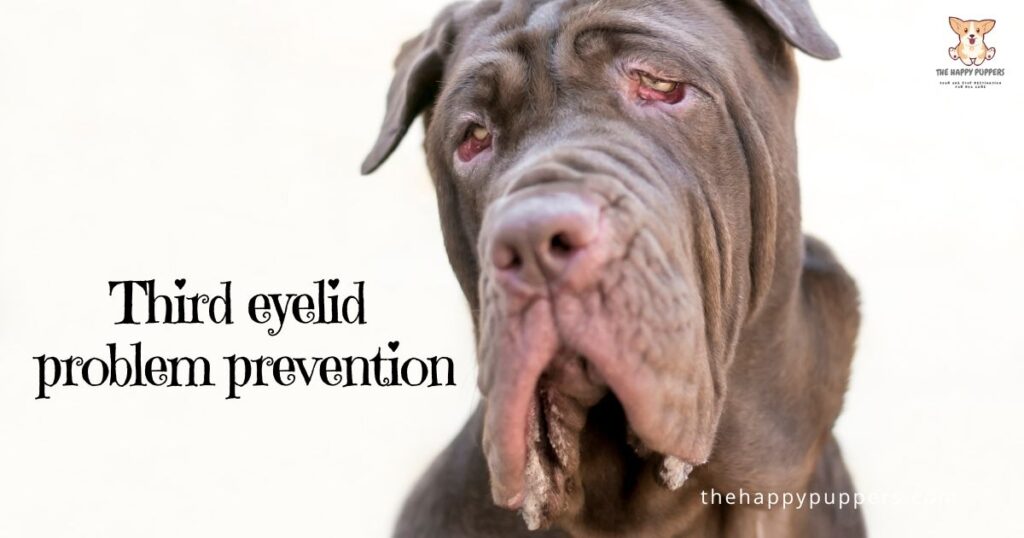
Practice proper hygiene
It is crucial that you keep the region around your dog’s eyes clean. Proper hygiene of the dog’s eye will prevent the occurrence of irritation and build-up of debris. To clean the eyes, use a clean damp cloth to wipe the region and remove any discharge and diet. Use a fresh cloth every time to clean each of the eyes. This will help prevent cross-contamination.
Environmental issues
Wind and dust can cause irritation to your dog’s third eyelid. You are responsible for protecting your dog’s eyes from environmental hazards. If you are moving through dusty areas or if its particularly windy, use dog goggles to protect your dog’s eyes. Alternatively, you can keep your dog indoors on such days.
Provide support via nutrition
If your dog is not getting a proper and balanced diet, it can negatively impact the health of the third eyelid in dogs. Make sure your dog is getting plenty of antioxidants, omega-3 fatty acids, and vitamin A so that your dog’s eye health is maintained. If you are not sure about your dog’s diet, consult your vet to help you out with this pickle.
Keep your dog away from irritants
Anything that can irritate your dog’s eyes, from shampoos and cleaning stuff to other potential irritants should be kept out of reach of your dog. In case your dog has shown a tendency to be prone to eye irritation, talk to your veterinarian about better options.
Taking prompt action
As a dog guardian, you will be none the wiser if you do not learn to act quickly. Since dogs cannot vocalize their problems, you need to pay attention in case your dog shows signs like hearing, spasms or any other unusual behavior, get your dog checked as soon as possible. In some cases, these issues may resolve by themselves. However, it may not always work. Therefore, early intervention is the best option.
Reduce stress on your dog
Stress negatively impacts your dog. Along with the psyche, it can also impact your dog physically. You should try and minimize the occurrence of stressful situations for your dog. Try and provide your dog with a calm and soothing environment: In case your dog is under high levels of stress, it can negatively impact ocular health.
Use vet-recommended products
If you have faced eye problems before with your pup, the best option is to talk to your veterinarian. Ask them about cleansers, ointments, and eye drops. Your vet can suggest the right products to maintain eye moisture, promote eye health and reduce any irritation as a result of infection or environmental factors.
Treatment of diseases pertaining to the third eyelid in dogs
Proper attention and regular care can help prevent most problems pertaining to the third eyelid in dogs. However, in certain cases, medical intervention may be crucial. Your dog may have to undergo surgery if the condition involves treatment of a tumor, prolapsed glands, or any other situation where medicines alone are not enough. Surgical procedures of the third eyelid are generally quick, and can easily alleviate any discomfort your dog is facing. Here are some of the surgical intervention options that are available for the treatment of third eyelid issues.
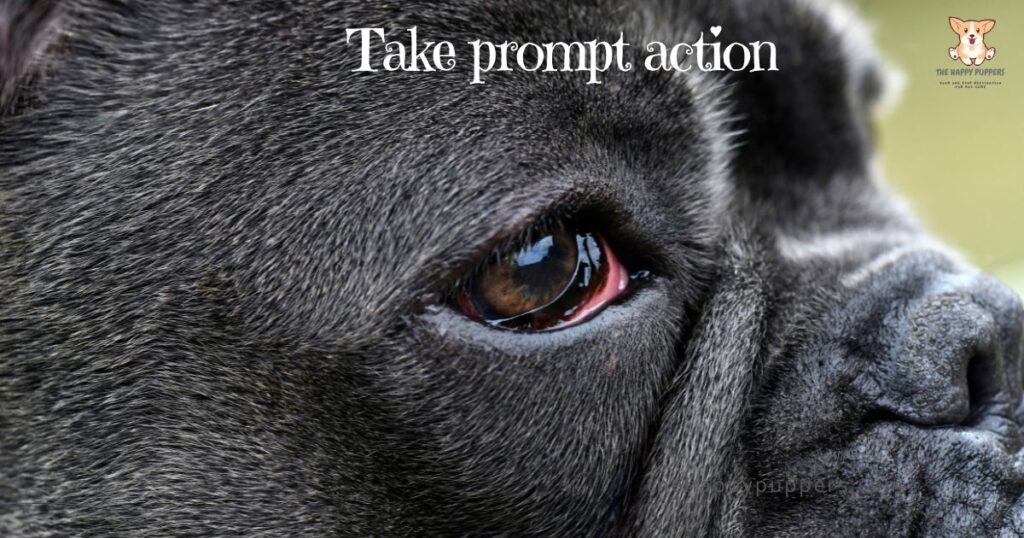
Treatment of cherry eye
As I mentioned before, cherry eye is characterized by the protrusion of the third eyelid gland. Cherry eye treatment most often requires surgical correction. The surgeon will carefully reposition the eye to the normal position and secure it in place using sutures. In certain cases, the veterinarian may use a modified technique to secure the gland in place.
Tumor removal
In case your dog has a tumor formation in the third eyelid, surgical intervention is the best option. Here, the focus of the surgeon will be to incise the tumor while keeping most of the healthy tissue intact. Following surgery, the vet will send the tumor for testing. If the results come back as malignant, further medical interventions may be needed.
Other conditions of the third eyelid in dogs requiring surgical intervention
Certain other conditions may also require surgical intervention for the treatment of the third eyelid in dogs. These may range from chronic irritation, eyelid spasms, repairing injuries etc.
Dog breeds prone to third eyelid issues
Even though third eyelid issue can affect dogs of any breeds, dogs of certain breeds am more prone to developing third eyelid problems than others. If you understand the reason behind these breeds suffering from third eyelid issues, you can be more involved in your dog’s care, identify the problem sooner and get your dog treated as soon as possible. Here are some of the dog breeds that are prone to problems of the third eyelid in dogs:
Bulldog breeds:
Bulldogs like French Bulldogs, English bulldogs, and other breeds who are brachycephalic in nature are endowed with loose facial skin. This less elastic nature of their skin makes them prone to issues like cherry eye and third eyelid problems.
Cocker Spaniels
Cocker Spanials are unfortunately genetically predisposed towards developing cherry eye. This occurs primarily due to the presence of weak connective tissues that work to support the third eyelid. If these muscles face a high level of strain, they tend to rupture leading to cherry eye.
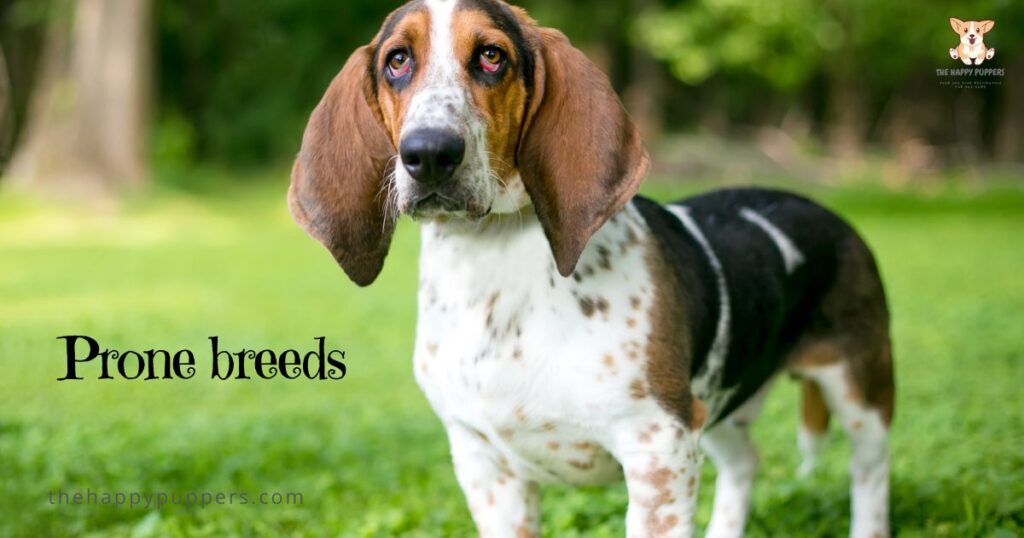
Beagle
Another prominent dog breed with a predisposition towards cherry eye is Beagle. They are extremely vulnerable to third eyelid prolapse.
Saint Bernard
Among the large dog breeds, Saint Bernard are one who are extremely prone to developing issues of the third eyelid. This primarily happens as a result of their facial anatomy and size.
Other notable dog breeds prone to problems of third eyelid in dogs:
- Basset Hound
- Lhasa Apso
- Shih Tzu
- Great Dane
- Bloodhounds
- Boxers
Conclusion
The third eyelid in dogs is a part of every dog’s ocular structure. It is responsible for protecting the eye against various problems starting from high winds to foreign objects. Unfortunately, the third eyelid can also be extremely vulnerable. It is susceptible to tumors, tears, and cherry eye conditions. As a dog guardian, you must pay extra attention to the third eyelid in dogs so that you can notice any problems as soon as possible and get the necessary treatment.
If you wish to stay updated with all the latest tips and tricks pertaining to dog care, psychology, training, and health, subscribe to The Happy Puppers. The subscription option is present in the sidebar. Your subscription will allow me to notify you the moment the next blog post goes live. If you like watching videos, subscribe to the YouTube channel of The Happy Puppers, Shruti and Delta. Remember to ring the notification bell and set it to ALL so that YouTube notifies you the moment the next video goes live on the channel.
If you have any queries or comments about this blog post, feel free to leave it in the comment section below. I will try to answer them as soon as possible.
I will see you in my next blog post
Dr. Shruti
Frequently Asked Questions.
The third eyelid in dogs has many functions. It is responsible for protecting the eye from scratches, keeping the eye moist by producing tears and protecting against any foreign objects that may cause harm to the eye.
There are many causes that can lead to problems of third eyelids. Formation of tumors, infection of the eye, or cherry eye are some of the problems that can lead to third eyelid issues leading to the requirement of medical or even surgical intervention.
In most cases, dogs do not control their third eyelids. It activates in an involuntary fashion. If your dog is exposed to water, high air force pressure, or a foreign object, the third eyelid comes out to prevent any damage from occurring to the cornea of the dog.
Some dogs can blink their third eyelids under certain conditions like if their regular eyelids do not work or if they are suffering from facial paralysis as a result of a severe ear infection

